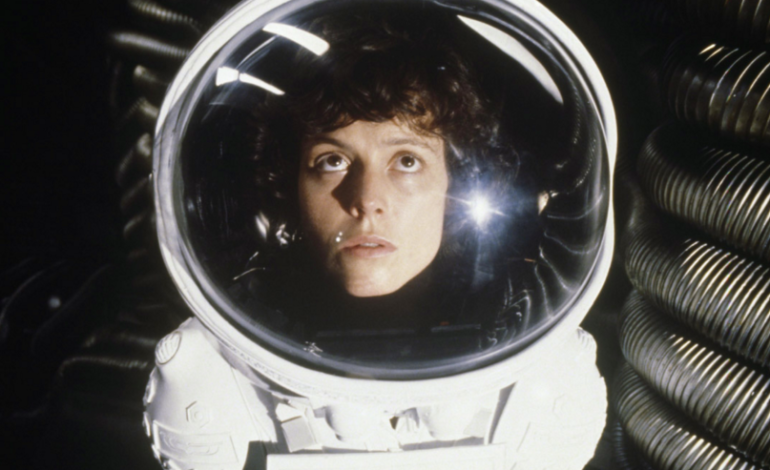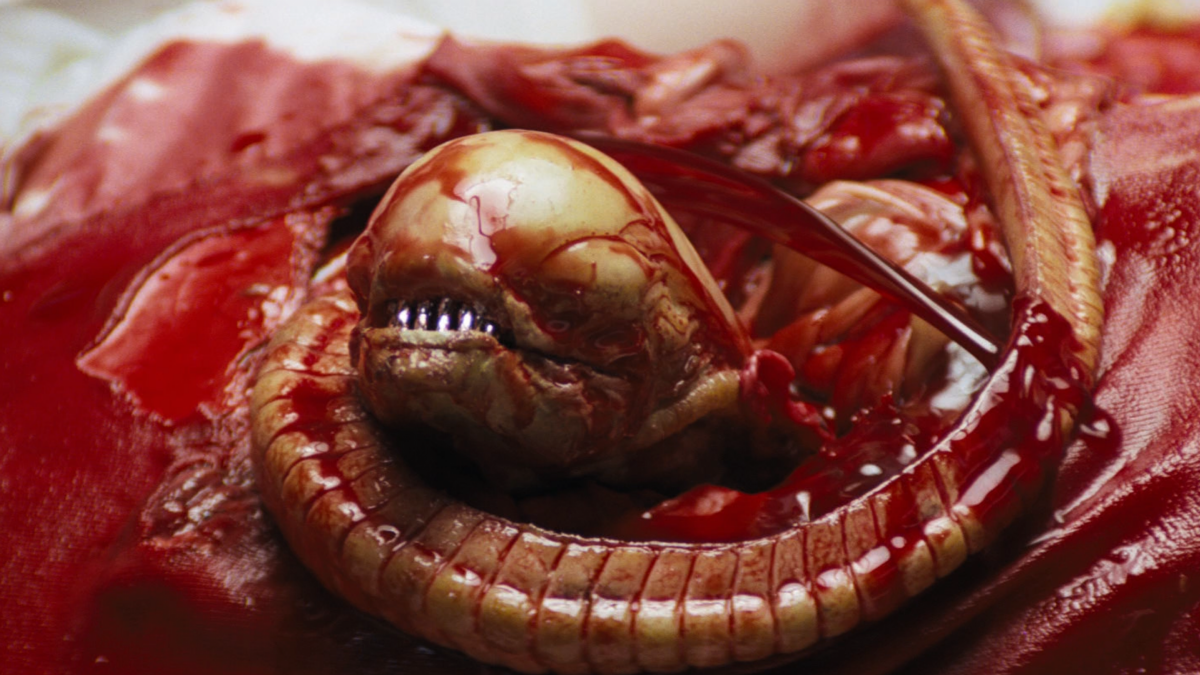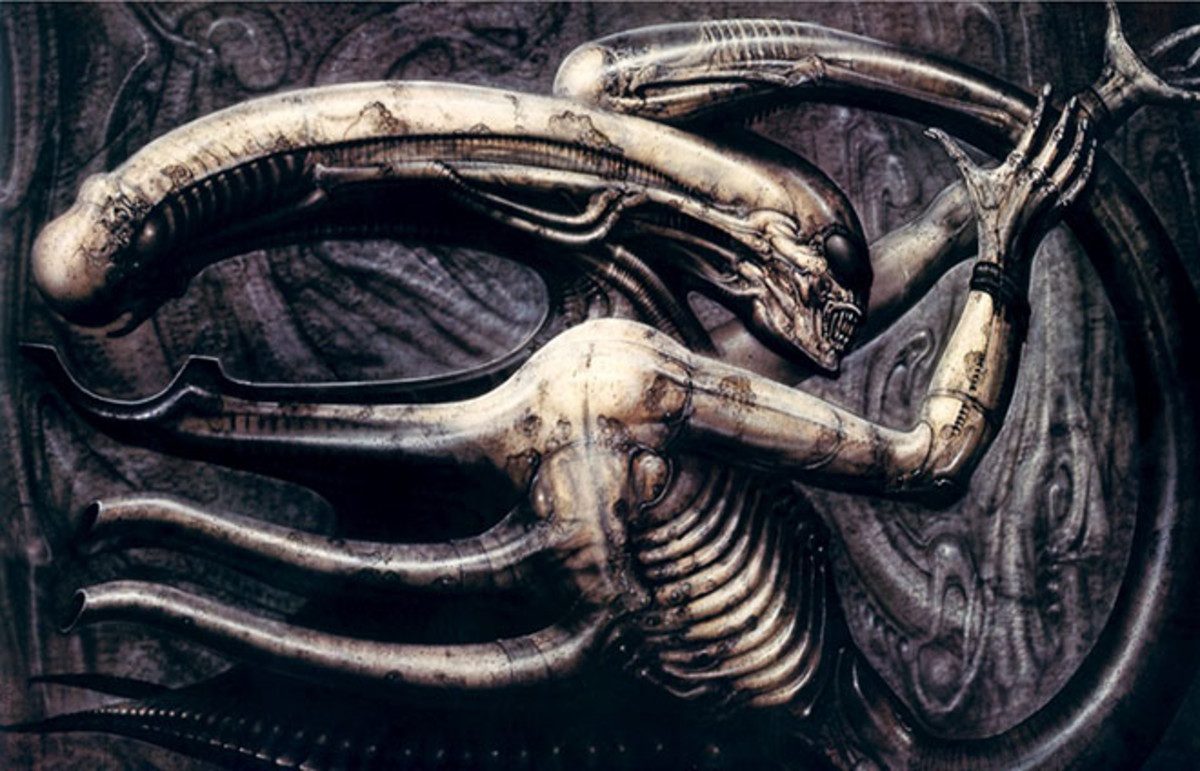

Forty years after its release, Alien still manages to be as terrifying and remarkable of a film as the day it first came out. The film follows the crew of a commercial starship who respond to a distress signal on an abandoned planet. On it, they encounter an alien ship filled with a nest of eggs – the contents of one managing to enter their home base and wreak havoc.
Coming out two years after Star Wars and three years before Blade Runner, Alien paved the way for future science fiction films to have darker, psychological plots. Its haunting mix of impregnation, rape, and sexual subtexts give an unique depiction of extraterrestrials that would go on to influence future contributions to the horror-sci-fi genre. The distinctive, phallic-looking head of the Xenomorph (a name that fans incorrectly attributed to the alien that has now become cannon) is such an iconic look that it’s been redesigned, simplified, and even parodied by various artists, movies, films, etc. The film’s visuals in general, from the Nostromo‘s gritty industrial design to the Xenomorph’s eel-like, parasitic form, have become a basis of inspiration for future extraterrestrial setting and monster design.
With how impactful of a film Alien has been, numerous documentaries and books have examined the origins and influences that led to its final product. One early inspiration for the movie was from screenwriter Dan O’Bannon’s childhood. Growing up on a farm in Missouri, he formed a deep interest in insects — which is reflected in the metamorphosis that the alien goes through. O’Bannon also suffered from Crohn’s disease, a type of inflammatory bowel disease that made “the digestion process [feel] like something bubbling inside of [O’Bannon] struggling to get out.” This experience would lead to his inclusion of the infamous chestburster scene, often considered the most memorable part of the film.


Another influence was O’Bannon’s science-fiction comedy film Dark Star, a low-budget, independent film that didn’t do very well financially or critically. O’Bannon wanted to do it again, but instead have it be a “horror movie instead of a comedy.” It’s also important to note that Dark Star was created with help from classic horror director John Carpenter, who would go on to make iconic horror movies like Halloween, The Thing, and The Fog.
O’Bannon had a deep familiarity with both horror and sci-fi, being inspired by Planet of the Vampires and Forbidden Planet. He set out to create a film that contradicted typical horror tropes. Rather than having the main victim be a female, he wanted to target men in particular, saying, “I’m not going to go after the women in the audience, I’m going to attack the men. I am going to put in every image I can think of to make the men in the audience cross their legs”. This why a male character, executive officer Kane (John Hurt), is “impregnated” by the alien, and not a female character like Ripley. The oral invasion against Kane was meant to play on male fears of penetration by O’Bannon as “payback” for all the sexually vulnerable women who are tormented by an outside monster.
This play on gender stereotypes comes back again with Warrant Officer Ellen Ripley (Sigourney Weaver). Considered an iconic heroine for her bravery and rationality in the face of a host-hungry alien, Ripley helped popularize the idea that women could play action heroes and save themselves without the help of men. However, she originally was meant to be played by a male with the character name “Martin Roby” until Ripley decided to switch her gender, commenting, “I just had a thought. What would you think if Ripley was a woman? She would be the last one you would think would survive—she’s beautiful.” So Weaver’s ass-kicking character wasn’t created for the purpose of embodying bold, feminist ideals, but instead to act as a sort of plot-twist — audiences wouldn’t expect her to survive against an unearthly, acid-shooting, phallic-resembling alien.


On the subject of the alien antagonist, Mxdwn writer A.V. Hannah commented, “There [can’t] possibly be anything more terrifying or nightmarish than a Xenomorph. An all-black creature with no eyes and that can either stand taller than an average human man or crawl on all fours really sends shivers down my spine. This changed the standard for aliens in the sci-fi genre because no longer do I think of little green men when I picture extraterrestrials.”
The man behind these “nightmarish” Xenomorphs is iconic artist and designer H.R. Giger. O’Bannon discovered him after the two met through Alexandre Jodorowsky’s failed production of Dune. Despite the project’s disappointing end, the two would form a fruitful collaboration that solidified Alien’s creation. Giger was heavily inspired by Egyptian art, sexual imagery, and his self-made aesthetic of “biomechanical” — a mix of human anatomy and machines. It was Necronom IV, an art piece that Giger had made long before production of Alien started, that ended up being used as the basis for the creature. The androgynous nature of the design, as well as the alien’s inherently sexual and hostile appearance, gave it a distinctly disturbing look. Line producer Ivan Powell described it as looking like “it could just as easily fuck you before it killed you.”
Mixing Crohn’s disease, bugs, campy horror films, and sexual imagery seems like an odd combination, and yet it works perfectly for Alien. It created a timeless movie that holds up even today, offering itself as a memorable introduction to young viewers as well. Mxdwn writer Noah Pfister describes how, when he first saw it at twelve years old, “it was one of the best movie watching experiences of my life. Even when I had to pause the movie and nonchalantly go downstairs because I got too scared. My mom still laughs at me over this.”
Though the extraterrestrial world Alien offers viewers is obviously terrifying, there’s still a desire to dig deeper and uncover the Xenomorph’s mysterious origins. While newer installments in the franchise drifted away from the enigmatic but simple plot to more ambitious concepts, audiences can always look back to the original Alien for a creative, yet chilling, psychological horror flick.
